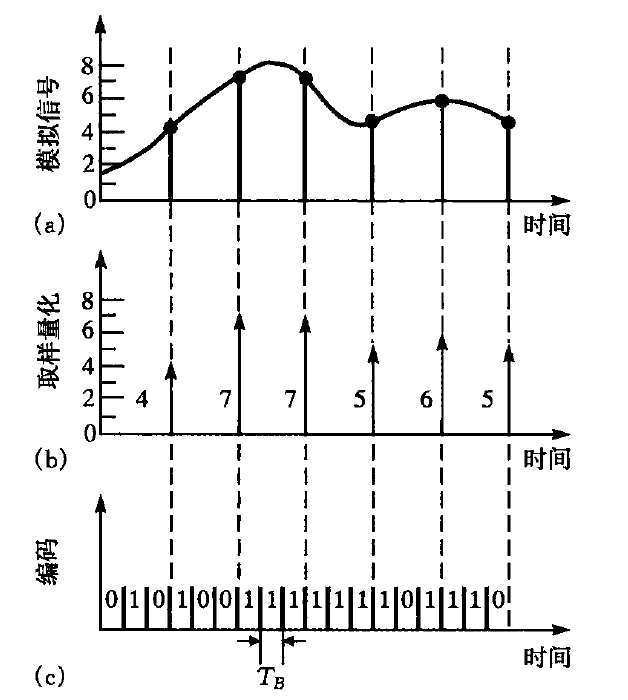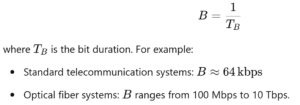Optical communication systems are pivotal in modern information transfer due to their efficiency and capacity. This section introduces fundamental concepts related to signal types, channel reuse, and modulation techniques in optical communication systems. It serves as an essential guide for understanding how data is transferred using light as the carrier.
Analog and Digital Signals in Optical Communication
Communication systems handle two main types of signals: analog and digital.
- Analog Signals: These are continuous signals that vary smoothly over time. Examples include audio signals captured by microphones and visual information from cameras.
- Digital Signals: These are discrete signals, represented in binary as “1” and “0.” Typical examples include computer data streams.

To convert an analog signal into a digital signal, the system employs sampling techniques at specific intervals. Sampling frequency (fs) must adhere to the Nyquist Criterion, where fs≥2Δf(twice the signal bandwidth), ensuring no loss of information. Once sampled, the signal undergoes quantization and encoding to form the final digital representation.
Channel Reuse in Optical Systems
Analog and digital signals occupy a specific frequency bandwidth. In optical communication, bandwidth utilization defines transmission efficiency.
- Digital Transmission: The bandwidth (B) corresponds to the bit rate:

- Channel Multiplexing Techniques:
- Time Division Multiplexing (TDM): This technique interleaves data streams in time slots. For instance, five channels at 64 kbps can share a single fiber with only 3 µs delay.
- Frequency Division Multiplexing (FDM): Each channel occupies a different frequency range, avoiding interference. A modern example is Wavelength Division Multiplexing (WDM), the industry standard for high-capacity optical networks.
Modulation Techniques in Optical Communication
Modulation is the cornerstone of optical system design, enabling the conversion of electrical signals into optical signals for transmission.
- Direct Modulation: The electrical signal is directly applied to the light source, causing the output power of the laser to vary in sync with the signal.
- External Modulation: The light is passed through modulators (e.g., electro-optic, acousto-optic, or magneto-optic modulators) that encode the signal by altering the physical properties of light. External modulation offers superior performance in long-distance or high-data-rate applications.
Table: Comparison of Multiplexing Techniques
| Multiplexing Type | Description | Application |
|---|---|---|
| TDM (Time Division) | Allocates time slots for multiple signals on the same channel. | Digital signal transmission. |
| FDM (Frequency Division) | Utilizes different frequency ranges for each signal. | Analog and digital signals; broad use in WDM. |
By integrating concepts such as signal types, multiplexing, and modulation, optical communication systems achieve remarkable transmission speeds and capacities, establishing themselves as the backbone of modern information technology. As advancements continue, these systems are expected to play an even greater role in future communications.





